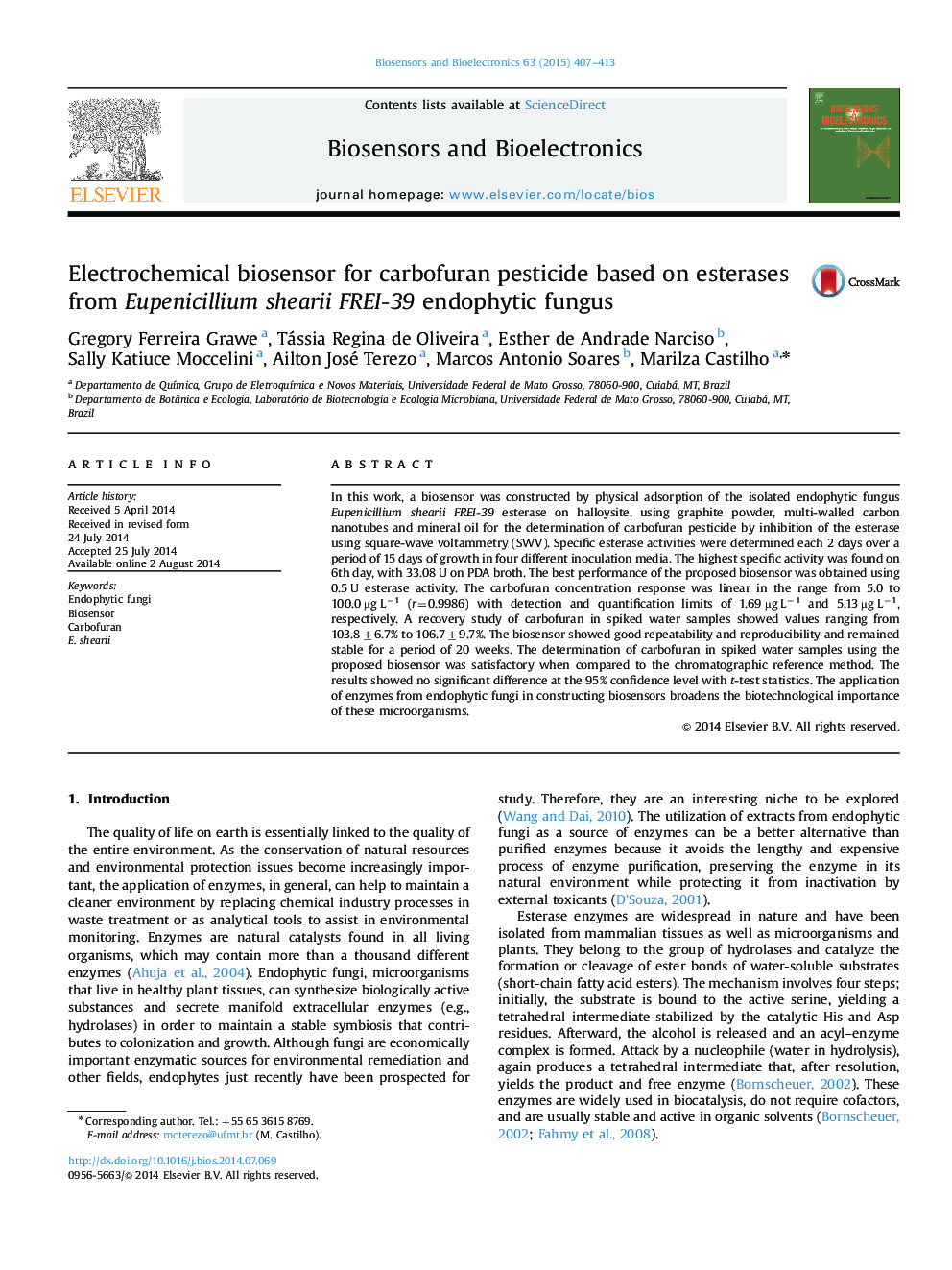| Article ID | Journal | Published Year | Pages | File Type |
|---|---|---|---|---|
| 7233231 | Biosensors and Bioelectronics | 2015 | 7 Pages |
Abstract
In this work, a biosensor was constructed by physical adsorption of the isolated endophytic fungus Eupenicillium shearii FREI-39 esterase on halloysite, using graphite powder, multi-walled carbon nanotubes and mineral oil for the determination of carbofuran pesticide by inhibition of the esterase using square-wave voltammetry (SWV). Specific esterase activities were determined each 2 days over a period of 15 days of growth in four different inoculation media. The highest specific activity was found on 6th day, with 33.08 U on PDA broth. The best performance of the proposed biosensor was obtained using 0.5 U esterase activity. The carbofuran concentration response was linear in the range from 5.0 to 100.0 µg Lâ1 (r=0.9986) with detection and quantification limits of 1.69 µg Lâ1 and 5.13 µg Lâ1, respectively. A recovery study of carbofuran in spiked water samples showed values ranging from 103.8±6.7% to 106.7±9.7%. The biosensor showed good repeatability and reproducibility and remained stable for a period of 20 weeks. The determination of carbofuran in spiked water samples using the proposed biosensor was satisfactory when compared to the chromatographic reference method. The results showed no significant difference at the 95% confidence level with t-test statistics. The application of enzymes from endophytic fungi in constructing biosensors broadens the biotechnological importance of these microorganisms.
Keywords
Related Topics
Physical Sciences and Engineering
Chemistry
Analytical Chemistry
Authors
Gregory Ferreira Grawe, Tássia Regina de Oliveira, Esther de Andrade Narciso, Sally Katiuce Moccelini, Ailton José Terezo, Marcos Antonio Soares, Marilza Castilho,
